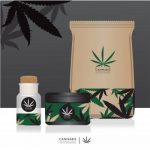Altitude Products’ CEO Krista Whitley discusses the federal government’s proposed rules and how common-sense regulation may help advance other markets and normalize cannabis consumption.
Canada’s newest proposed regulations on packaging may have been influenced by established and regulated American markets, but could also end up advancing U.S. cannabis reform and influencing consumer consumption. That’s according to Krista Whitley, CEO of Altitude Products, a cannabis conglomerate that develops marijuana technologies and products within seven different brands.
“I think it obviously would be simpler if [the U.S.] had one consistent, common-sense regulation that applied to all regulated markets,” she said. “However, … having those common-sense regulations in place in Canada certainly helps the United States in moving a toe forward in those states that are probably a little more apprehensive about having a regulated marketplace [by setting an example]. What regulation does is help keep everybody safe and really prove out the model that regulated cannabis just makes sense for communities.”
Canada’s proposed regulations, released on March 19 following a public consultation on the legalization of marijuana, focus on safety in many different areas, from keeping children safe to warning consumers about potential risks.
“I think … child-resistant packaging has been really fundamental and key in some of the most regulated environments, and [it keeps] things as professional as possible so that it doesn’t cheapen the cannabis industry and still maintains its medicinal value for brands and for the packaging that it’s put into,” Whitley said. “A lot of what we’re seeing [in Canada] is … the same common-sense regulations that we’re used to seeing in states like Nevada, and they’re rolling out … in California as they evolve into a more regulated market.”
In addition to child-resistant requirements, Canada’s proposed cannabis packaging regulations include restrictions on color, limits on branding, required warning labels and more. Fluorescent and metallic colors are prohibited. Branding colors must be different than the red used in the official cannabis symbol and the yellow background of Health Canada warning labels (which address pregnancy risks, addiction, youth, operating machinery or driving while under the influence and more). Producers must include one of the 14 mandatory health warnings on each package and must rotate the warnings, using each one an equal number of times per year.
In addition, only one other branding element can be displayed on the package aside from the brand name itself, and the lettering of any slogans must be smaller than the health warning, while any logos must be the same size or smaller than the cannabis symbol. Inserts inside cannabis packages are banned to prevent cannabis companies from circumventing the limits on branding.
The maximum amount of marijuana in a single package is 30 grams of dried cannabis, or the equivalent amount for other classes of cannabis, as outlined in the regulations. (For example, the maximum amount of cannabis oil allowed per package is 2.1 liters.) Product weight or volume, packaging date, recommended storage conditions and the percentage of THC and CBD in each dose must also be marked on the packaging, as well as the statement, “Keep out of the reach of children.”
The proposed regulations also include rules on how Canada’s federal government will regulate micro-cultivators and micro-processors, and could still change as the Cannabis Act advances through Parliament, CBC News reports.
“I think all smart, forward-facing, future-facing companies and brands are keeping an eye on Canada,” Whitley said, adding that Kush Bottles does an excellent job of not only keeping up with regulations, but also thriving under them.
Brands must set themselves apart by understanding their target market and creating packaging that allows for flexibility, so the brand can evolve alongside packaging requirements, she added.
“At the end of the day, it’s built around heart and passion because cannabis consumers can see a phony coming, and so I think it’s really important for all those brands to make sure they maintain their authenticity and really build a strong brand identity,” Whitley said.
Compliance is also key to long-term success.
“Above and beyond, I think our key to being around in our industry for a long time to come has been that we meet or exceed the regulatory requirements of today because we know that they’re in a constant state of flux,” she said. “Really, the only thing constant is the change.”
The Weekend Box (pictured left), Altitude Products’ collection of cannabis products meant to help consumers discover their favorite method of consumption, launched in November 2017—before California’s rules were in place—and already offered products in child-resistant packaging. In addition, CBD brand Canna Hemp labels each product with state testing results, also exceeding the current regulatory requirements.
“Exceeding regulations helps these brands to stay ahead of the regulatory curve and gives the consumer confidence that they are buying a quality product,” Whitley added.
Whitley predicts a sharp increase in the number of ancillary cannabis businesses and packaging companies in Canada as the regulations are finalized, as well as increased normalization and acceptance of cannabis consumption.
“I think across the board, … the effect of having common-sense regulation is that we all move in a much more expedited pace toward the normalization of cannabis consumption, and ultimately that has to be everyone’s goal, so I certainly think that is top of mind when I think of the benefits and advantages of having highly regulated packaging requirements in Canada,” she said.
(114)





Leave A Reply